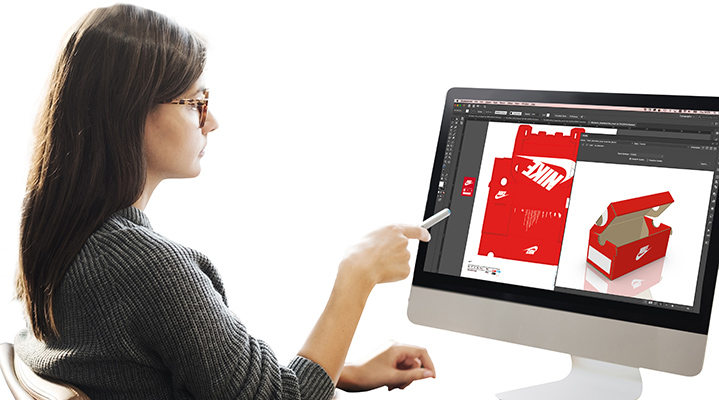Learning
How 3D Models are Designed for Product Packaging
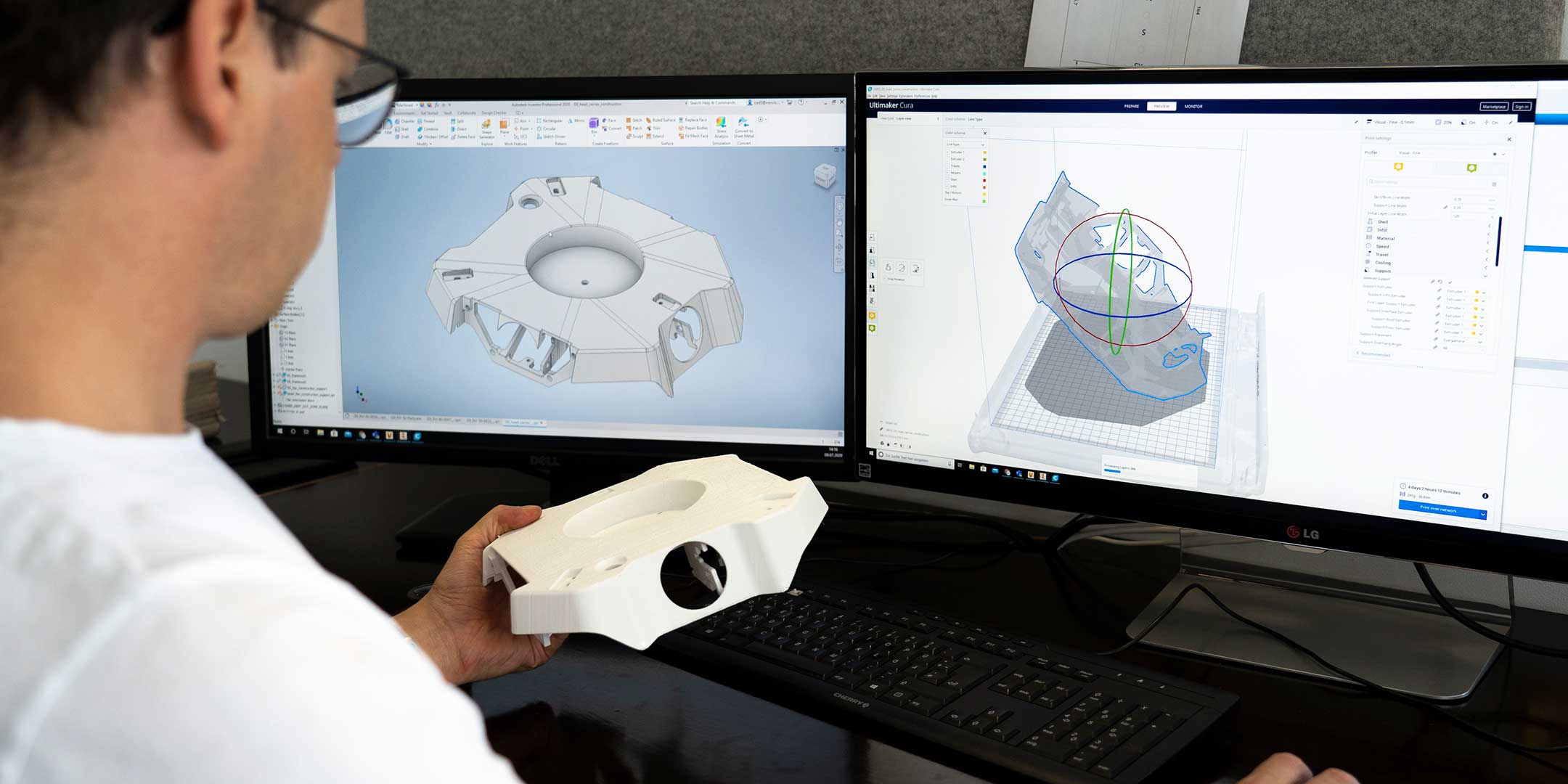
In today’s competitive market, product packaging plays a crucial role in attracting customers and influencing their purchasing decisions. The rise of e-commerce has further emphasized the importance of visually appealing packaging designs. With advancements in technology, designing 3D models for product packaging has become an invaluable tool for marketers and designers. In this article, we will explore the techniques and best practices involved in creating captivating 3D models for product packaging.
Understanding the Purpose of 3D Packaging Models
Before delving into the technical aspects of designing 3D models for product packaging, it is important to understand the purpose they serve. 3D packaging models offer several benefits to designers, marketers, and stakeholders involved in the packaging design process.
Visual representation: One of the primary purposes of 3D packaging models is to provide a realistic visual representation of the packaging design. Unlike 2D drawings or sketches, 3D models offer a three-dimensional view that enables designers and stakeholders to visualize the final product from different angles. This allows for a better understanding of how the packaging will look and function in the real world.
By creating a detailed and accurate 3D representation of the packaging design, designers can identify any potential design flaws or improvements before investing in physical prototypes. This saves time and resources that would have otherwise been spent on creating multiple physical prototypes.
Testing and validation: 3D packaging models serve as a valuable tool for testing and validating various design elements of 3d modeling. Designers can experiment with different colors, textures, materials, and finishes to see how they impact the overall aesthetic appeal of the packaging. They can also test different sizes, shapes, and configurations to ensure optimal functionality and practicality.
3D models allow designers to simulate how the packaging will interact with the product, such as fitting the product securely, protecting it from damage, and providing easy access to the contents. This helps in identifying any potential issues and making necessary adjustments before moving forward with the production process.
Marketing and promotion: High-quality 3D renders of packaging designs can be utilized for marketing and promotional purposes. These renders can be showcased on websites, social media platforms, advertisements, and product catalogs. By presenting the packaging design in a visually appealing and realistic manner, companies can attract and engage potential customers.
Software Tools for Creating 3D Packaging Models
Creating 3D packaging models requires the use of specialized software tools that offer powerful features for modeling, rendering, and animation. These tools enable designers to bring their packaging designs to life in a virtual environment. Here are some popular software tools used for creating 3D packaging models:
Autodesk 3ds Max: Autodesk 3ds Max is a comprehensive 3D modeling, animation, and rendering software widely used in the design industry. It provides a robust set of tools for creating intricate packaging designs with precise dimensions and realistic materials. With its intuitive interface and extensive plugin support, 3ds Max offers versatility and flexibility for designers to explore various design options.
Blender: Blender is a free and open-source 3D creation suite that has gained significant popularity in recent years. It offers a wide range of features for modeling, animation, sculpting, and rendering, making it suitable for creating realistic packaging visuals. Blender’s powerful rendering engine, Cycles, allows for high-quality renders with realistic lighting and materials. The software also has an active community that contributes to its continuous development and provides extensive learning resources.
Adobe Dimension: Adobe Dimension is part of the Adobe Creative Cloud suite and is specifically designed for creating 3D product mockups, including packaging designs. It offers a user-friendly interface that allows designers to easily import 2D design assets and transform them into 3D representations. With Dimension, designers can quickly visualize and iterate on packaging designs, apply materials and textures, and set up lighting and camera angles for realistic renders.
Rhino 3D: Rhino 3D, also known as Rhinoceros, is a versatile 3D modeling software widely used in industrial design and product development. It offers powerful modeling tools and supports a wide range of file formats, making it compatible with other software used in the design workflow. Rhino 3D provides features for precise modeling of packaging structures and the creation of complex shapes and patterns. It also integrates well with rendering engines like V-Ray or KeyShot for high-quality visualization.
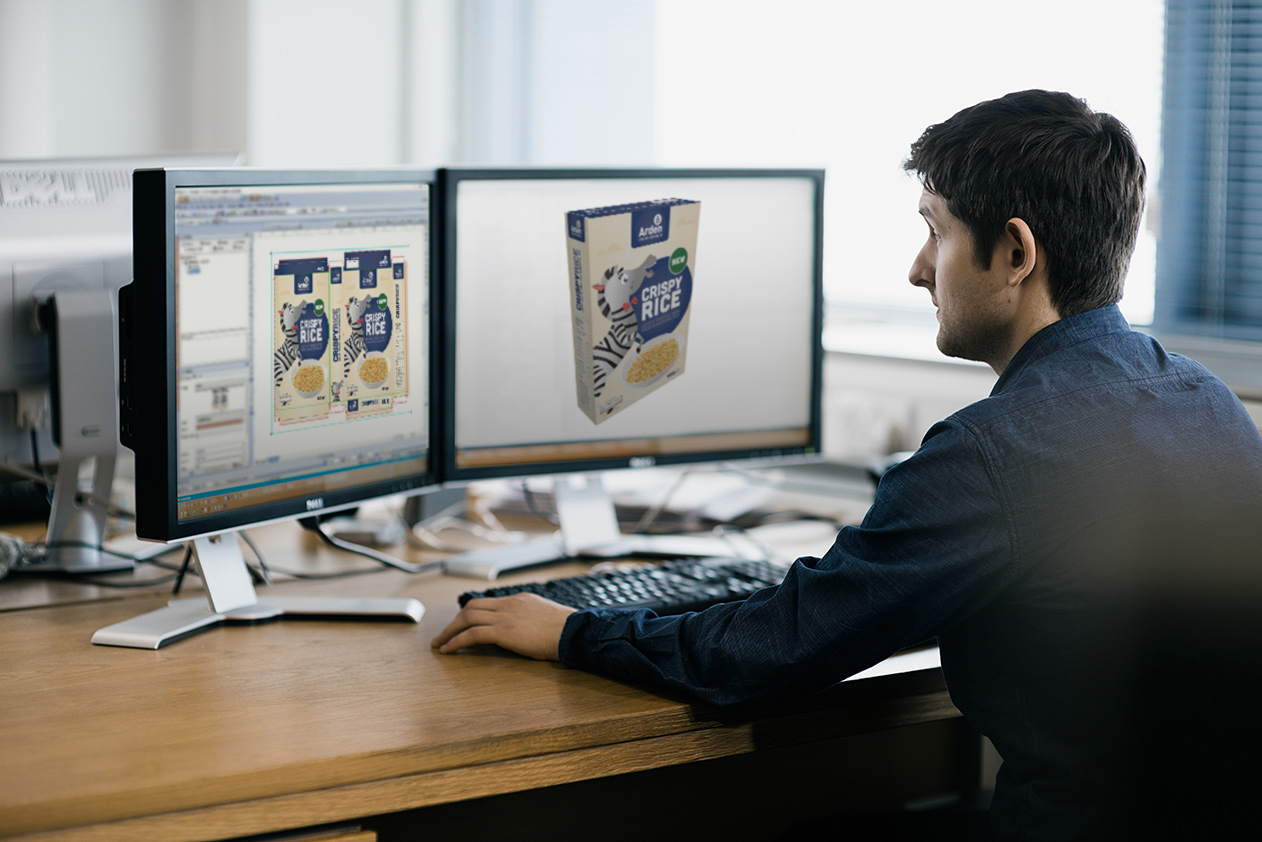
Designing Techniques for 3D Packaging Models
When creating 3D packaging models, there are several techniques and considerations that can enhance the overall appeal and realism of the final output. Here are some important design techniques to keep in mind:
Accurate dimensions: One of the key aspects of designing 3D packaging models is ensuring that the model accurately represents the physical dimensions of the packaging. This includes factors such as length, width, and height. Paying close attention to these measurements helps maintain authenticity and ensures that the final packaging design aligns with the intended specifications.
Textures and materials: Utilizing high-resolution textures and materials is essential for creating realistic packaging visuals. Consider the specific materials used in the actual packaging, such as cardboard, plastic, or glass. Apply appropriate textures and material properties to simulate the look and feel of these materials accurately. Pay attention to details such as reflections, surface imperfections, and textural variations to enhance the visual authenticity of the packaging model.
Lighting and shadows: Implementing realistic lighting techniques is crucial for creating convincing 3D packaging models. Proper lighting helps to bring out the form, texture, and details of the packaging design. Consider the type of lighting environment in which the product will be displayed or used, whether it’s natural daylight, studio lighting, or ambient lighting. Accurately placing light sources and adjusting their intensity and color can create shadows and highlights that add depth and realism to the 3D packaging model.
Typography and branding: Incorporating typography and branding elements onto the packaging model helps stakeholders visualize the final product’s branding and messaging. Ensure that the text on the packaging is legible and aligned with the overall design. Pay attention to factors such as font choice, size, placement, and color to create a harmonious and aesthetically pleasing composition. Consider how the typography and branding elements interact with other design elements of the packaging, such as graphics or product images.
Environmental context: When designing 3D packaging models, it is important to consider the environmental context in which the product will be displayed or used. Incorporate appropriate contextual elements, such as backgrounds or scenes, that complement the packaging design and enhance its visual impact. For example, if the product is a food item, the packaging model could be placed in a kitchen setting or a natural outdoor environment. Adding contextual elements helps provide a sense of scale, context, and visual storytelling.
Iterative Design and Collaboration
Iterative design and collaboration are essential components of the process of creating 3D packaging models. They enable designers to refine their designs, gather feedback, and ensure that the final packaging design meets the desired objectives. Here’s a detailed explanation of iterative design and collaboration in the context of 3D packaging models:
Iterative design: Iterative design involves a cyclical process of designing, prototyping, testing, and refining a product or design. When applied to 3D packaging models, it allows designers to continuously improve and optimize the packaging design based on feedback and real-world considerations.
During the iterative design process, designers create an initial 3D packaging model based on their understanding of the requirements and objectives. This initial model serves as a starting point for further exploration and refinement. Designers then seek feedback from stakeholders, clients, and potential consumers to gather insights and perspectives.
Based on the feedback received, designers make necessary adjustments and modifications to the 3D packaging model. These iterations can involve changes to dimensions, colors, materials, typography, and other design elements. Each iteration brings the packaging design closer to its desired form, addressing any concerns or issues identified during the feedback stage.
The iterative design process helps ensure that the final packaging design is thoroughly tested, refined, and optimized. It allows designers to identify and address potential problems or challenges early on, reducing the risk of costly revisions or rework in later stages of the design process.
Collaboration: Collaboration plays a crucial role in the design and development of 3D packaging models. Effective collaboration involves the involvement and input of various stakeholders throughout the design process.
Designers collaborate with clients, marketing teams, and other relevant stakeholders to align the packaging design with the brand’s vision, marketing goals, and target audience preferences. Collaborative discussions help ensure that the 3D packaging model effectively communicates the desired messaging and brand identity.
Additionally, collaboration enables designers to gather feedback and insights from stakeholders. This feedback can come in the form of suggestions, critiques, or requests for modifications. By incorporating diverse perspectives and expertise, designers can refine and enhance the packaging design, making it more appealing, functional, and aligned with the intended objectives.
Optimization for Different Platforms
When creating 3D packaging models, it’s important to consider the platform or medium through which the models will be presented or utilized. Different platforms have varying technical requirements and constraints that must be taken into account to ensure optimal performance and compatibility. Here are some key considerations for optimizing 3D packaging models for different platforms:
Web and mobile applications: If the 3D packaging models are intended for web or mobile applications, optimization is crucial to ensure smooth loading and rendering on various devices and network conditions. Here are some optimization techniques:
Polygonal optimization: Reduce the complexity of the 3D model by optimizing the polygon count without sacrificing visual quality. Simplify the geometry by removing unnecessary details or using techniques such as level-of-detail (LOD) models.
Texture optimization: Optimize the size and resolution of textures used in the packaging model to reduce file size and loading time. Consider using texture compression formats that offer a good balance between image quality and file size, such as JPEG or PNG.
Streaming and progressive loading: Implement streaming techniques to load 3D models progressively, allowing users to view and interact with the packaging model while it continues to load in the background. This approach minimizes initial loading times and improves the overall user experience.
Virtual reality (VR) and augmented reality (AR): If the 3D packaging models are intended for VR or AR applications, optimization is crucial to maintain high frame rates and ensure a smooth and immersive experience. Consider the following optimization techniques:
Level of detail (LOD): Implement LOD models that dynamically adjust the level of detail based on the user’s position and distance from the packaging model. This helps optimize performance by reducing the complexity of the model when it’s farther away from the user.
Optimization for Different Platforms
When designing 3D packaging models, it is essential to optimize them for different platforms to ensure optimal performance and compatibility. Here are some key considerations for optimizing 3D packaging models for different platforms:
Web and Mobile Applications
For 3D packaging models intended for web or mobile applications, optimization is crucial to ensure smooth loading and rendering on various devices and network conditions. Consider the following techniques:
Polygonal Optimization: Reduce the complexity of the 3D model by optimizing the polygon count. This involves simplifying the geometry, removing unnecessary details, or implementing techniques such as level-of-detail (LOD) models. By reducing the polygon count, you can improve loading times and rendering performance without compromising visual quality.
Texture Optimization: Optimize the size and resolution of textures used in the packaging model. Compress textures to reduce file size and loading time. Consider using texture compression formats like JPEG or PNG to strike a balance between image quality and file size.
Streaming and Progressive Loading: Implement streaming techniques to load 3D models progressively. This approach allows users to view and interact with the packaging model while it continues to load in the background. By implementing progressive loading, you can minimize initial loading times and enhance the user experience.
Virtual Reality (VR) and Augmented Reality (AR)
For 3D packaging models in VR or AR applications, optimization is crucial to maintain high frame rates and provide a smooth and immersive experience. Consider the following optimization techniques:
Level of Detail (LOD): Implement LOD models that dynamically adjust the level of detail based on the user’s position and distance from the packaging model. This technique optimizes performance by reducing the complexity of the model when it is farther away from the user’s viewpoint.
Occlusion Culling: Use occlusion culling techniques to optimize rendering. By only displaying objects that are visible to the user, you can minimize unnecessary rendering calculations and improve overall performance.
Real-time Lighting and Shading: Utilize optimized lighting and shading techniques specifically designed for real-time rendering in VR and AR environments. This may involve pre-baked lighting, light probes, or real-time global illumination solutions to achieve realistic lighting effects without sacrificing performance.
Conclusion
Designing 3D models for product packaging requires careful consideration of various factors, including the purpose of the packaging, software tools, designing techniques, iterative design, collaboration, and optimization for different platforms. By understanding the purpose of the 3D packaging models, designers can effectively communicate the intended message and align the design with the product’s requirements.
Using software tools and 3D modeling services are specifically designed for creating 3D packaging models enhances efficiency and enables designers to unleash their creativity. Employing designing techniques such as accurate dimensions, textures, lighting, and typography ensures a realistic and visually appealing representation of the packaging design. The iterative design process and collaboration with stakeholders facilitate continuous improvement, incorporating feedback and refining the packaging design iteratively.
Optimizing 3D packaging models for different platforms, whether it’s web and mobile applications, VR and AR experiences, or offline rendering and presentations, is crucial for achieving optimal performance, compatibility, and visual quality. By considering platform-specific optimization techniques, designers can ensure a seamless user experience and an impactful presentation of the packaging design.
Designing 3D models for product packaging is an exciting and multidimensional process that requires a blend of creativity, technical skills, and attention to detail. By employing the techniques and best practices discussed in this blog, designers can create stunning and engaging 3D packaging models that effectively showcase products, captivate consumers, and contribute to the success of the overall branding and marketing efforts.

Learning
First-Time Buyer’s Guide to the UK Property Market

Entering the UK property market as a first-time buyer can feel both exciting and daunting. The process is filled with potential pitfalls and complex decisions, but with the right guidance, it can be navigated smoothly. The estate agents in Yorkshire demystify the journey from the initial decision to buy a home to the moment you step over the threshold of your new property.
Understanding Your Financial Position
The first and perhaps most crucial step in the home-buying process is understanding your financial situation. This includes assessing your savings, income, and current debts. Here’s how you can prepare:
1. Deposit: Generally, you’ll need at least 5% of the property price as a deposit, though aiming for 10% or more can provide better mortgage rates.
2. Income and Expenses: Use a budget planner to assess your monthly income against your expenses. This will help you understand how much you can afford in monthly mortgage repayments.
3. Credit Score: Lenders will evaluate your credit score to determine your mortgage eligibility. So it’s important to have a good credit score, and you should work on it if required.
4. Mortgage Options: Speak to a mortgage advisor to understand different types of mortgages, such as fixed-rate, variable-rate, and help-to-buy schemes.
Getting a Mortgage Agreement in Principle
A Mortgage Agreement in Principle (AIP) is a statement from a lender indicating how much they’ll likely lend you. You will be a more attractive buyer with an AIP as it shows sellers you’re serious and financially prepared.
Deciding What You Want
Before you start viewing properties, it’s essential to know what you’re looking for. Consider the following factors:
1. Location: Proximity to work, schools, public transport, and amenities are key. Research neighbourhoods to find the best fit for your lifestyle.
2. Property Type: Decide whether you want a flat, terraced house, semi-detached, or detached property. Each has its pros and cons.
3. Must-Haves: Make a list of non-negotiables, such as the number of bedrooms, garden size, and parking facilities.
4. Future Proofing: Consider your future needs. Are you planning to start a family? Do you need space for a home office?
Starting the Property Search
With a clear idea of what you’re looking for, you can begin your property search. Here are some tips:
1. Use Online Portals: Websites like Rightmove, Zoopla, and OnTheMarket are excellent starting points. Set up alerts to get notified of new listings that meet your criteria.
2. Visit Estate Agents: Register with local estate agents who can provide insights into the market and inform you of new properties before they’re listed online.
3. Attend Viewings: Don’t rush this part. Visit several properties to get a feel for what’s available in your price range.
Making an Offer
Once you find a property you love, it’s time to make an offer. Here’s how to approach it:
1. Research: Check the selling prices of similar properties in the area to gauge a fair offer.
2. Negotiate: Don’t be afraid to negotiate. The starting point is most usually the asking price.
3. Conditions: You might include conditions in your offer, such as the inclusion of certain fixtures or a specific moving date.
The Legal Process
If your offer is accepted, the legal process begins. You’ll need a solicitor or licensed conveyancer to handle the legalities. Here’s what to expect:
1. Conveyancing: This is the legal transfer of property ownership. Your solicitor will handle this, including conducting searches, dealing with the Land Registry, and transferring the funds.
2. Surveys and Inspections: Arrange for a property survey to check for structural issues. There are different types of surveys, from basic condition reports to full structural surveys.
3. Mortgage Finalisation: Once the survey is complete and satisfactory, your mortgage can be finalised.
4. Exchange of Contracts: This is when the sale becomes legally binding. You’ll pay your deposit at this stage.
5. Completion: On the agreed completion date, the remaining money is transferred, and you receive the keys to your new home.
Moving In
Moving day can be hectic, but planning can ease the stress:
1. Hire a Removal Company: Book a reliable removal company well in advance. Discover the best deals by getting quotes from multiple companies.
2. Pack Strategically: Label your boxes by room and keep essential items accessible.
3. Notify Utilities and Change Address: Inform your utility providers of your move date and update your address with banks, the DVLA, and other important institutions.
Settling In
Get settled. Introduce yourself to the neighbours, familiarise yourself with the local area, and really start to make the place your own.
Here are a few final tips:
1. Safety Checks: Make sure that your smoke alarms and carbon monoxide detectors are working, and make sure that you know where the gas and electricity meters are located.
2. Maintenance Plan: Keep a record of the smooth functioning of your new home with a maintenance schedule, complete with regular checks and seasonal tasks.
3. Personal Touches: Add personal touches to make the space feel like home. This can be from putting up family photos or redoing the decoration in your rooms.
Conclusion
Buying your very first home in the UK is most definitely a milestone, difficult and full of challenges but rewarding in the end. Such a philosophy guides you in understanding finances and knowing what you want to achieve from detailed research, and seeking professional advice that confidently helps you navigate the property market. Yes, the journey may have its hurdles, but in the end—owning your own home—the reward will be worth the effort. Welcome to your new chapter!
SEE ALSO: Conquer the Chaos: Hacks to Clean Your Home in Half the Time
Learning
5 Health Benefits of Regular Pedicures
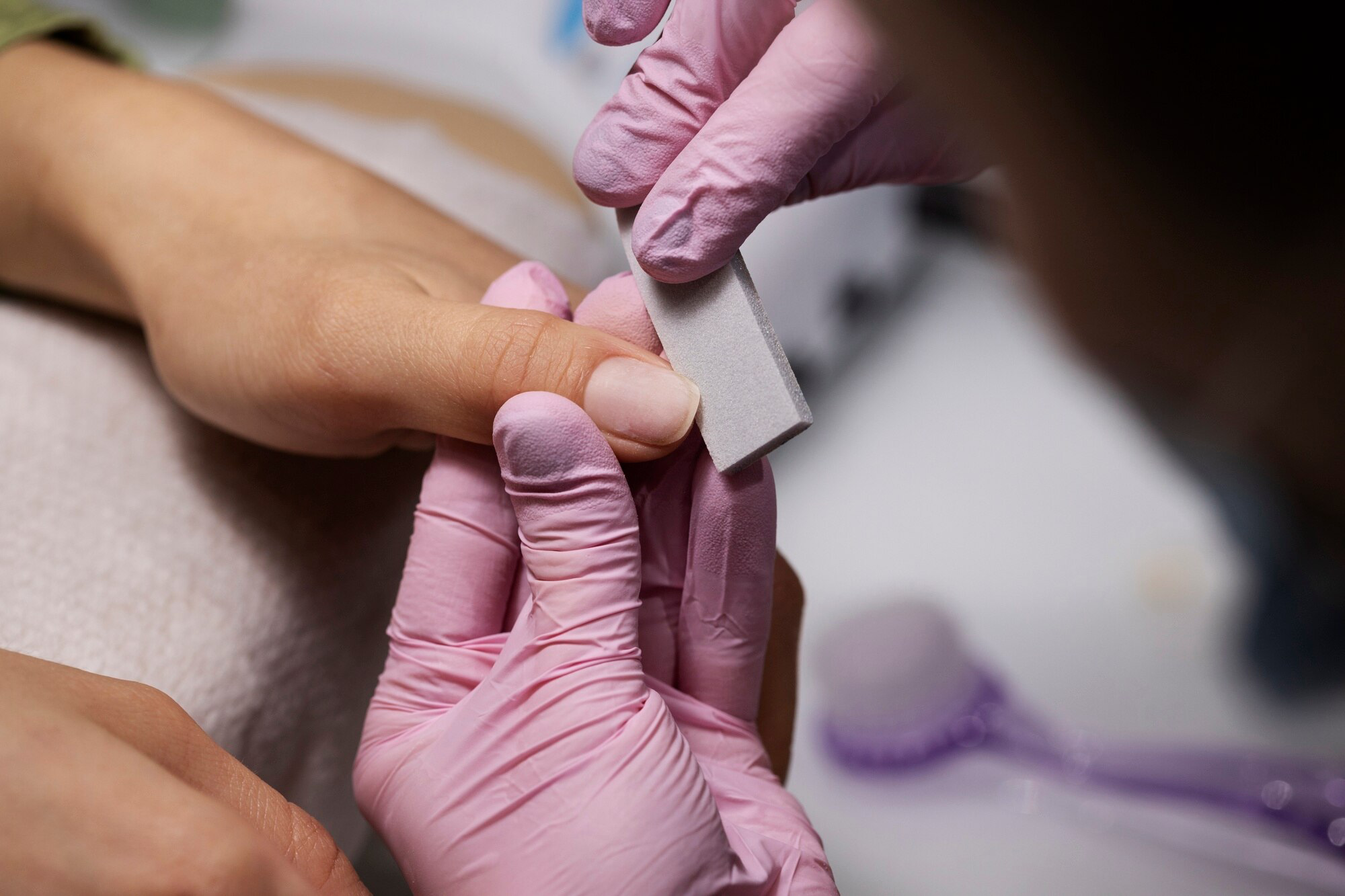
There’s nothing quite like a pedicure to keep your feet looking and feeling their best, but did you know that pedicures do more than simply enhance the appearance of your feet? Many people don’t realize that regular pedicures can come with a wide range of health benefits that can promote the well-being of your feet, so here are some ways that your routine pedicure keeps both your toenails and feet in the best condition possible!
Smoother Skin
One of the biggest misconceptions about pedicures is that they only cater to and look after your toenails. While you’ll definitely be leaving each session with a fresh coat of nail polish, your pedicure can also do wonders for the health of your skin. Aside from trimming and shaping your nails and cuticles, you’ll notice that your nail technician also dedicates a few steps to the skin of your feet.
After inspecting your feet and looking for any issues or imperfections that may need to be addressed, your technician will work on an exfoliating scrub to remove any dead skin cells. This step may also be aided by a foot file, which can be used to buff away any calluses and other problem areas manually.
Softer Skin
After your nail technician addresses all the problem areas of your feet and removes any unwanted dead skin cells, he or she will often massage in a moisturizing product, such as lotion, cream, or butter, to ensure that your skin is properly moisturized. These products contain skin-loving ingredients that will ensure that your feet have everything they need to look and feel their best so that you can walk out of your pedicure with a renewed sense of confidence.
Healthier Nails
After your pedicure session, your nails will not only look better due to the fresh coat of nail polish, but they’ll also be healthier and stronger. This is because your nail technician takes their time to ensure that your nails are properly looked after through steps that include deep cleaning, nail trimming, nail filing, and cuticle care. All of these things work together to prevent issues like ingrown nails from occurring, all the while improving the appearance of your nails.
Increased Blood Circulation
While the specific steps included in your pedicure will depend on the beauty salon, most pedicures will have a massage step somewhere in the mix. One of the often overlooked benefits of these massages is the increased blood circulation, which can deliver more nutrients and oxygen to your feet and nails, promoting their health and appearance. Aside from that, better blood flow means reduced tension and soreness, as well as better distributed heat throughout your body.
Reduced Infections
A significant amount of dirt and bacteria can build up on your feet without you even realizing it, but pedicures can be a great way to prevent these from happening in the first place. The exfoliation step of a pedicure removes dead skin cells as well as all the debris that may have accumulated underneath, and the deep cleaning of your toenails and cuticles also gets rid of any impurities that may have slipped beneath them, which can stop infections from happening.
These are some of the many health benefits that you can look forward to at your next pedicure appointment. However, it’s worth noting that you need to book regular sessions to truly reap all the rewards. This can be difficult, especially when you don’t feel like driving to your nearest nail salon after a long day, but the good news is that you can enjoy the salon experience in the comfort of your own home with a home pedicure service.
Learning
Commercial Boiler Installation Services London
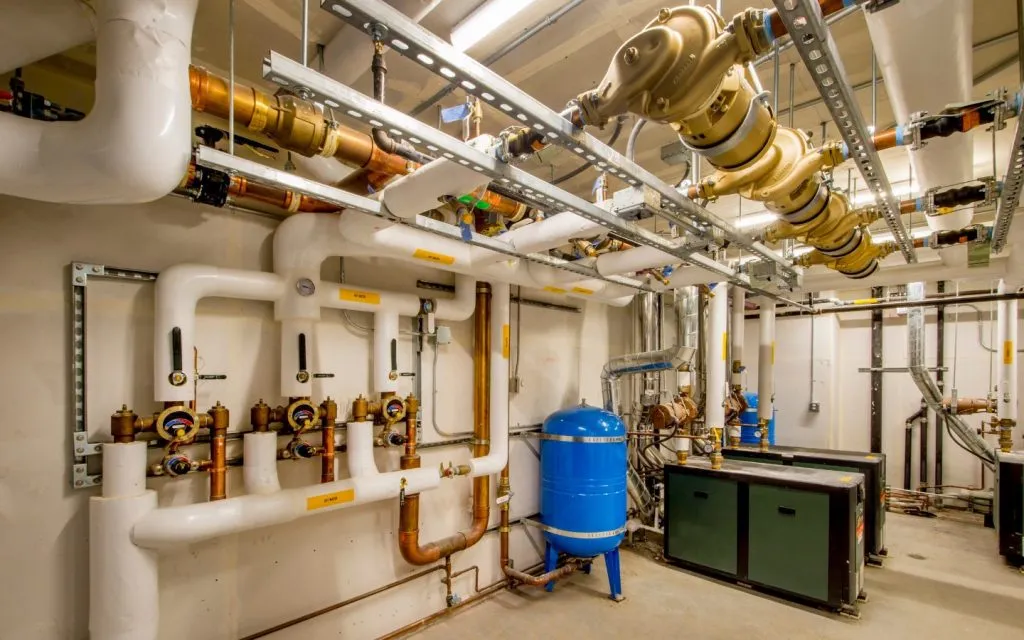
For businesses in the bustling city of London, having a reliable heating system is crucial. Whether you’re opening a new office, expanding your current premises, or simply upgrading an outdated system, commercial boiler installation services for businesses in London are essential to ensure your operations run smoothly and efficiently. Proper installation and maintenance of commercial boilers can make a significant difference in energy efficiency, cost savings, and the overall comfort of your workspace.
The Importance of Professional Installation
When it comes to installing a commercial boiler, professional expertise is paramount. Here’s why:
- Efficiency and Performance: Professional installation ensures that your boiler operates at peak efficiency, reducing energy consumption and lowering utility bills. A well-installed boiler can effectively meet the heating demands of your business without unnecessary energy waste.
- Safety: Commercial boilers are complex systems that require precise installation to operate safely. Professional installers adhere to stringent safety standards and regulations, minimizing the risk of accidents and ensuring the safety of your employees and premises.
- Compliance with Regulations: Commercial properties are subject to various building codes and regulations. Professional installers are well-versed in these requirements and ensure that your boiler system complies with all local laws and standards.
- Longevity and Reliability: Proper installation is critical to the longevity and reliability of your boiler. A professional installation can prevent common issues such as leaks, pressure problems, and system failures, ensuring that your boiler runs smoothly for years to come.
Key Considerations for Commercial Boiler Installation
When planning for a commercial boiler installation, several factors need to be considered:
- Type of Boiler: The type of boiler you choose will depend on your business’s specific needs. Options include gas boilers, oil boilers, and electric boilers, each with its own set of advantages. Consulting with a professional can help you determine the best choice for your business.
- Sizing and Capacity: The boiler’s size and capacity must match the heating demands of your commercial space. An undersized boiler will struggle to meet your needs, while an oversized one will lead to inefficiencies and higher costs.
- Location: The placement of your boiler affects its efficiency and accessibility for maintenance. Professional installers can help you choose the optimal location for your boiler.
- Integration with Existing Systems: If you’re upgrading or replacing an existing boiler, it’s essential to ensure compatibility with your current heating system. Professional installers can seamlessly integrate the new boiler with your existing setup.
Choosing the Right Installation Service
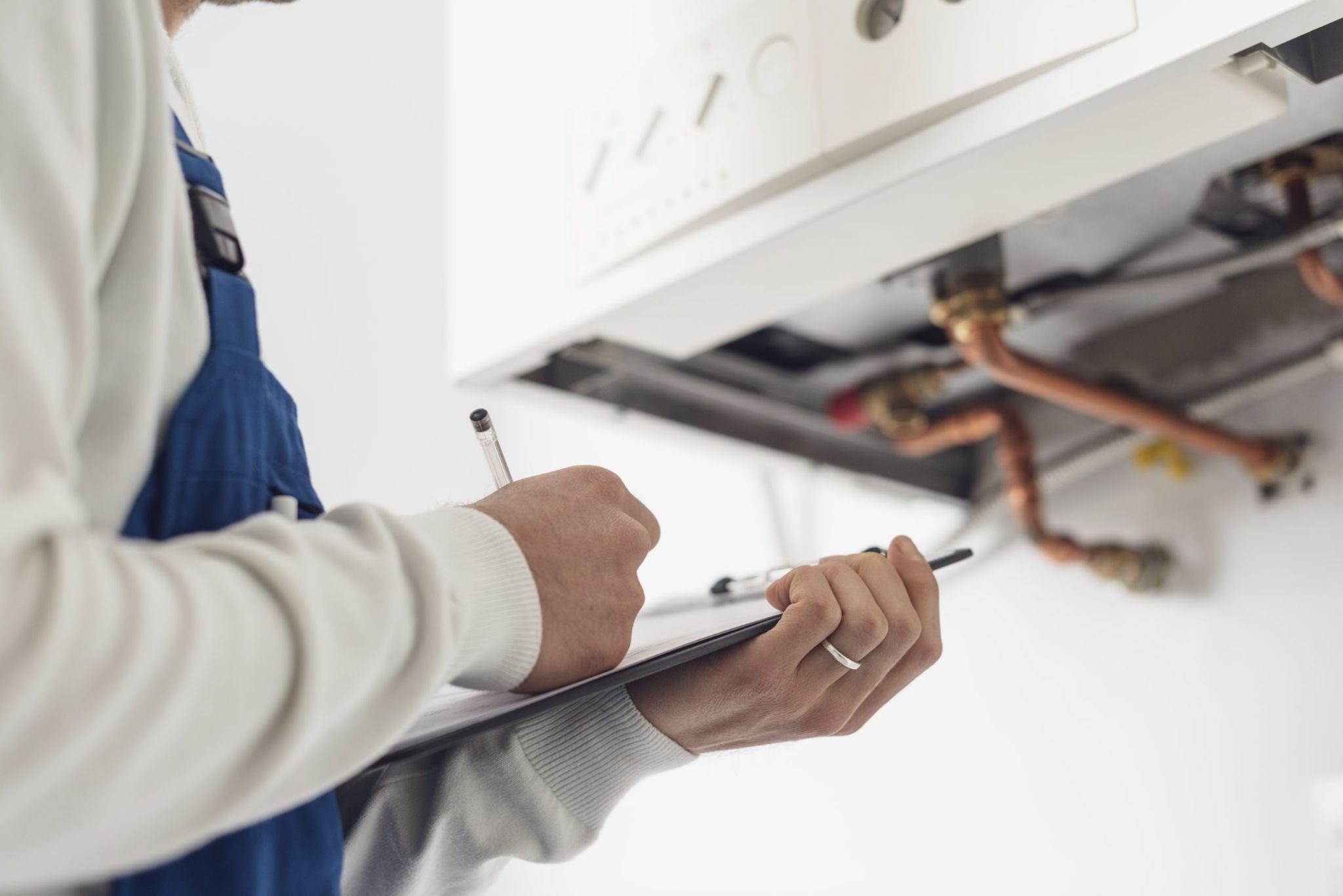
Selecting the right installation service provider is crucial to the success of your boiler installation project. Consider the following when making your choice:
- Experience and Expertise: Look for a provider with a proven track record in commercial boiler installations. Experienced installers can handle the complexities of commercial systems and provide high-quality workmanship.
- Reputation: Check reviews and testimonials from previous clients to gauge the provider’s reliability and customer satisfaction.
- Comprehensive Services: Choose a provider that offers a full range of services, including installation, maintenance, and repair. This ensures that all your boiler needs are met by a single, trusted source.
In London, ROWLEN is a reputable name known for delivering top-notch commercial boiler installation services. Their team of experts is dedicated to providing efficient, safe, and compliant installations tailored to the unique needs of businesses.
Conclusion
Investing in professional commercial boiler installation services for businesses in London is essential for ensuring efficiency, safety, and long-term reliability. By choosing an experienced and reputable service provider like ROWLEN, you can rest assured that your heating system will be installed correctly and maintained to the highest standards. Proper installation not only enhances the performance of your boiler but also contributes to the overall comfort and productivity of your business environment.
SEE ALSO:
-

 News4 years ago
News4 years agoLet’s Know About Ultra High Net Worth Individual
-
Entertainment2 years ago
Mabelle Prior: The Voice of Hope, Resilience, and Diversity Inspiring Generations
-

 Health4 years ago
Health4 years agoHow Much Ivermectin Should You Take?
-

 Tech2 years ago
Tech2 years agoTop Forex Brokers of 2023: Reviews and Analysis for Successful Trading
-

 Lifestyles3 years ago
Lifestyles3 years agoAries Soulmate Signs
-

 Movies3 years ago
Movies3 years agoWhat Should I Do If Disney Plus Keeps Logging Me Out of TV?
-

 Health3 years ago
Health3 years agoCan I Buy Ivermectin Without A Prescription in the USA?
-

 Learning3 years ago
Learning3 years agoVirtual Numbers: What Are They For?



